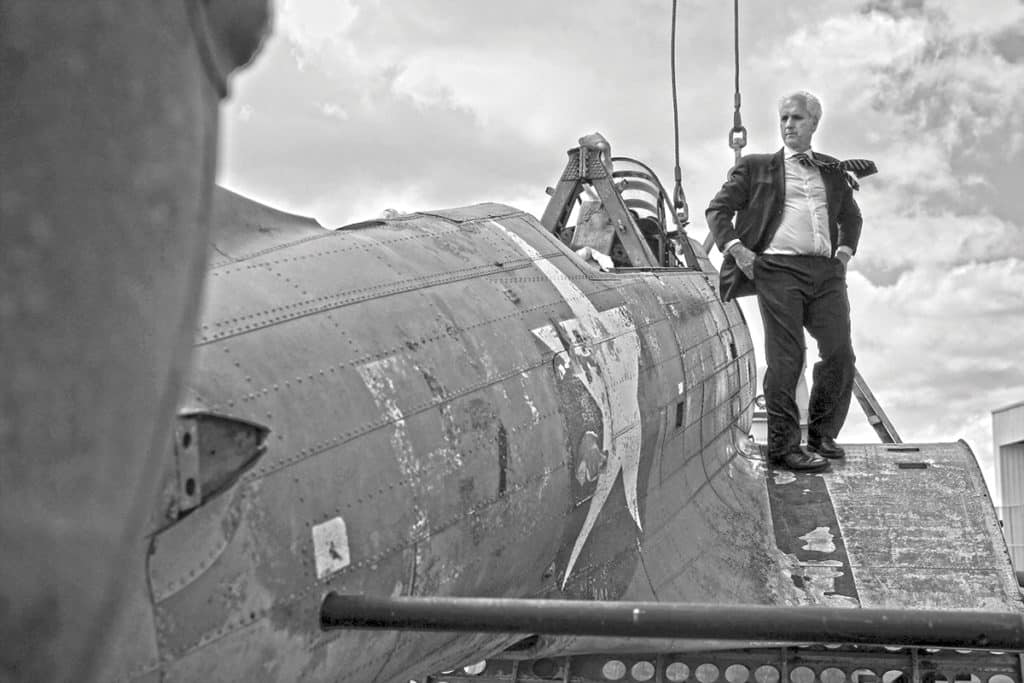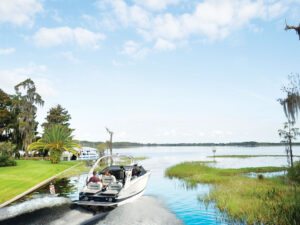
Why are there all these World War II Navy planes on the bottom of Lake Michigan? To find out, we spoke with Tara Lyssenko of A&T Recovery, which finds and pulls these planes out of the water.
How did A&T Recovery begin? My partner, Allan Olson, and I grew up together, and we always like to explore things, so one day Al said to me, “Hey, let’s get a boat and go out on Lake Michigan.” I said, “OK!” We had a chunky boat and a fish finder, and lo and behold, we found an airplane. In ’87, we started finding airplanes. We got really good at finding them.
How did these airplanes get into Lake Michigan?
From 1942 to ’45, the Navy had two makeshift flattop aircraft carriers on the south shore of Lake Michigan. They were platforms that moved. Pilots would have to qualify and take off so many times, and 14,000 to 15,000 pilots were qualified. In the process, 130 aircraft were lost in the lake.
And how did you get so good at finding them?
You’ve got to be willing to spend the time. Al and I went to the National Archives and spent a lot on time on research to give us a whole lot of information. The hard part is to find them. They had a new technology on these ships, radar. They would get radar fixes on the aircraft when they crashed, but there was something weird about that. Other people would try to find them, and they wouldn’t find them. We came to the realization that the ships were all for training, and one important part was training sailors on the radar. What was the first thing an 18-year-old kid would do when an airplane crashed? They’d run out on the deck to watch what happens. They want to see the cool thing happening. We came to the conclusion that X will never mark the spot.
You must be making a mint selling these rare airplanes to the highest bidder.
They belong to the U.S. Navy. Some billionaire can offer to pay you, and you’ll still go to jail. The Navy stepped in. They said, “We want you to recover a whole bunch for us.” The director of the National Museum of Naval Aviation found a way for us to contract with them to recover dozens of [airplanes], and we did that.
How many have you recovered?
I don’t know the exact number, but three dozen plus.
After 70 years in the lake, how do they look?
They are covered with an invasive species, the quagga mussel. Millions and millions are keeping the aircraft in a uric acid bath. It’s not as bad as salt water, but it’s not like fresh water. That’s why we’re in a panic to get the rest of them out. The Navy’s not funding them anymore.
How many hours have you spent pulling them from the drink?
I don’t know. It’s been 30 years. We joke that if we had worked at a fast-food restaurant instead of doing this, we’d be rich.









